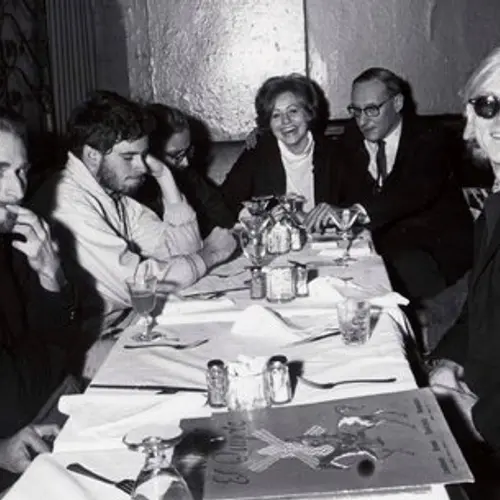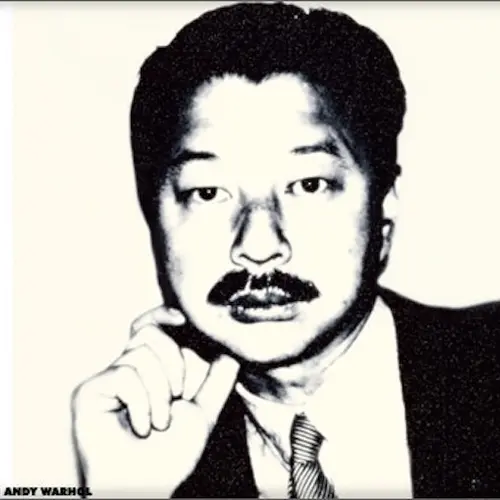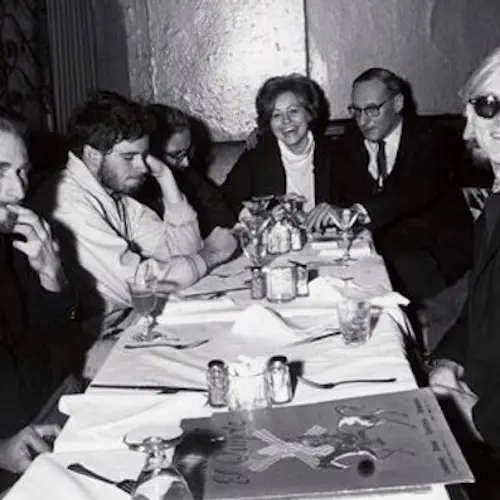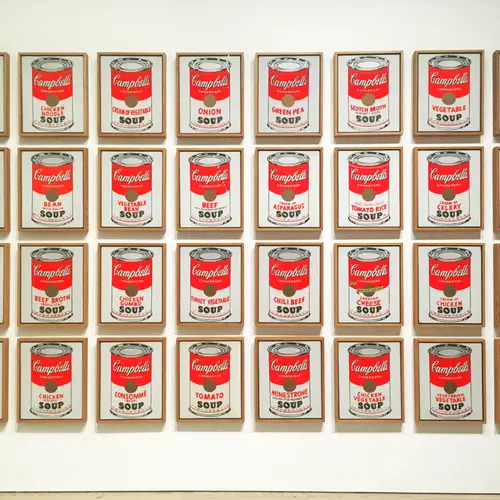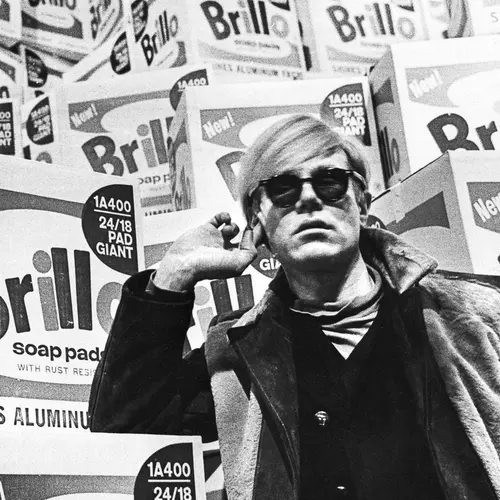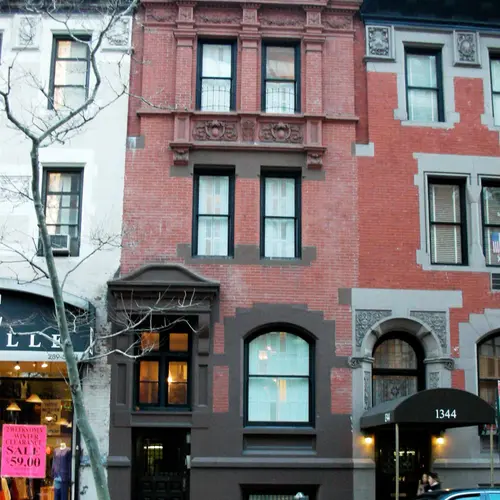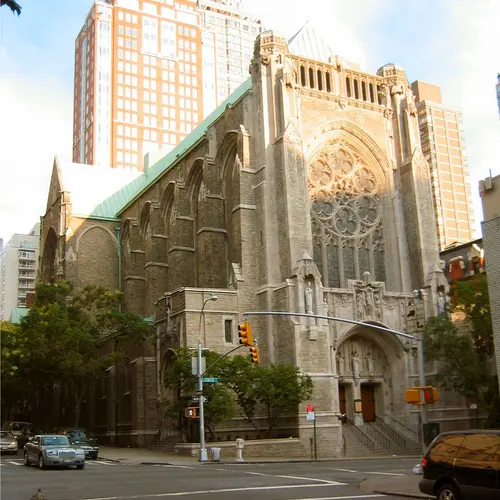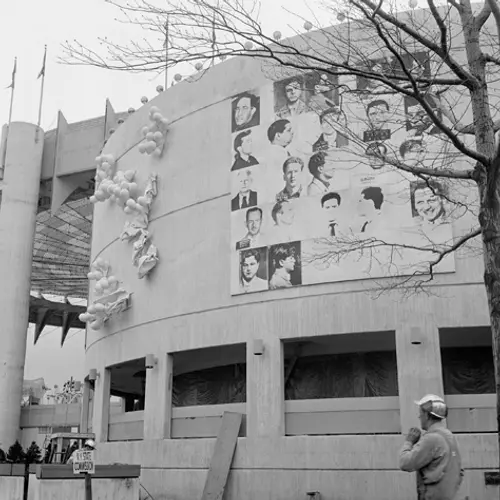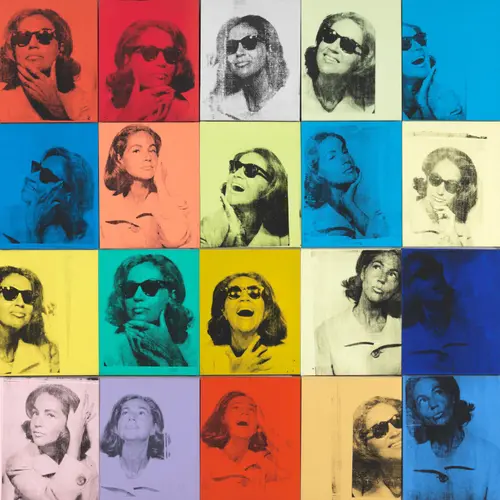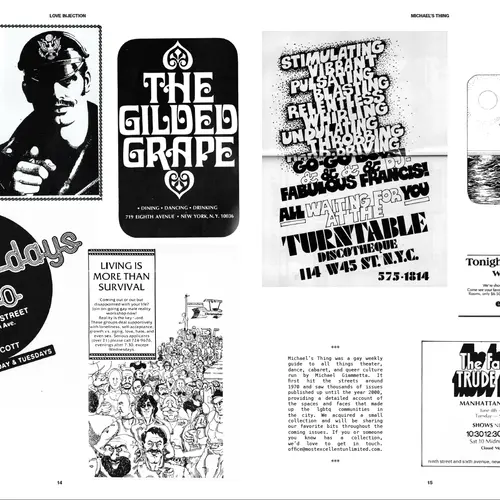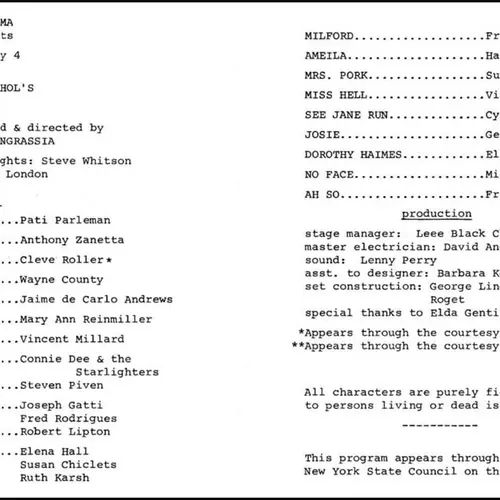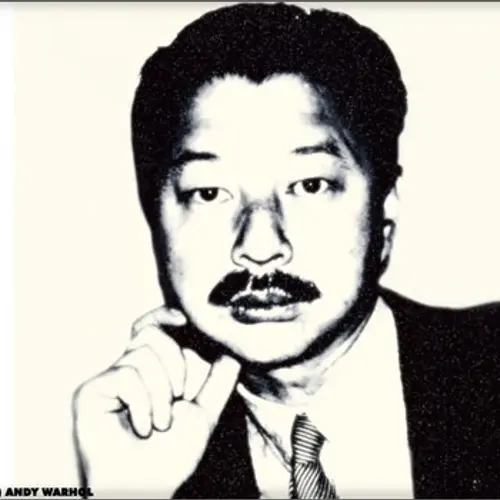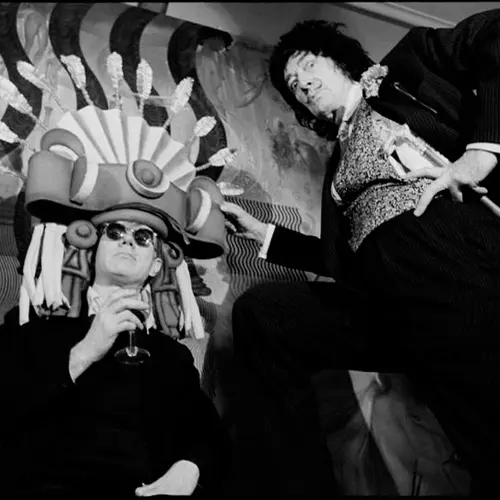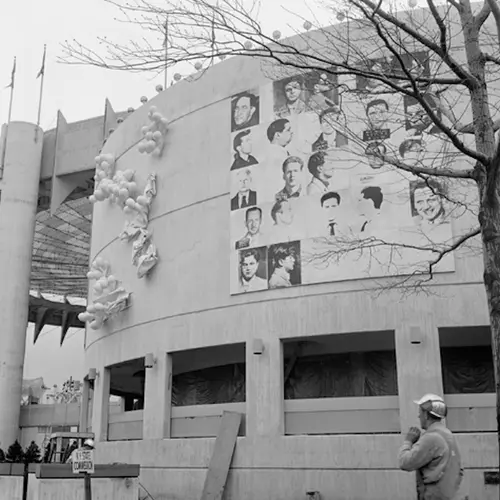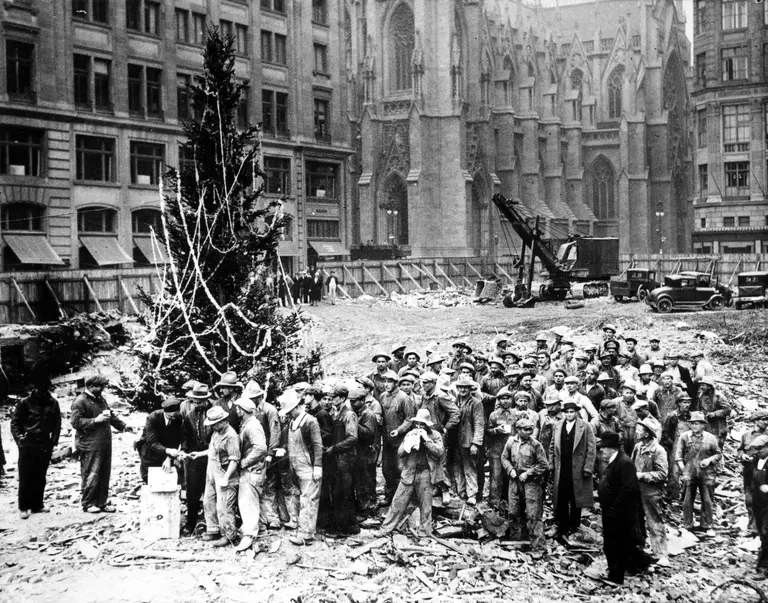Explore 10 of Andy Warhol’s lesser-known NYC haunts
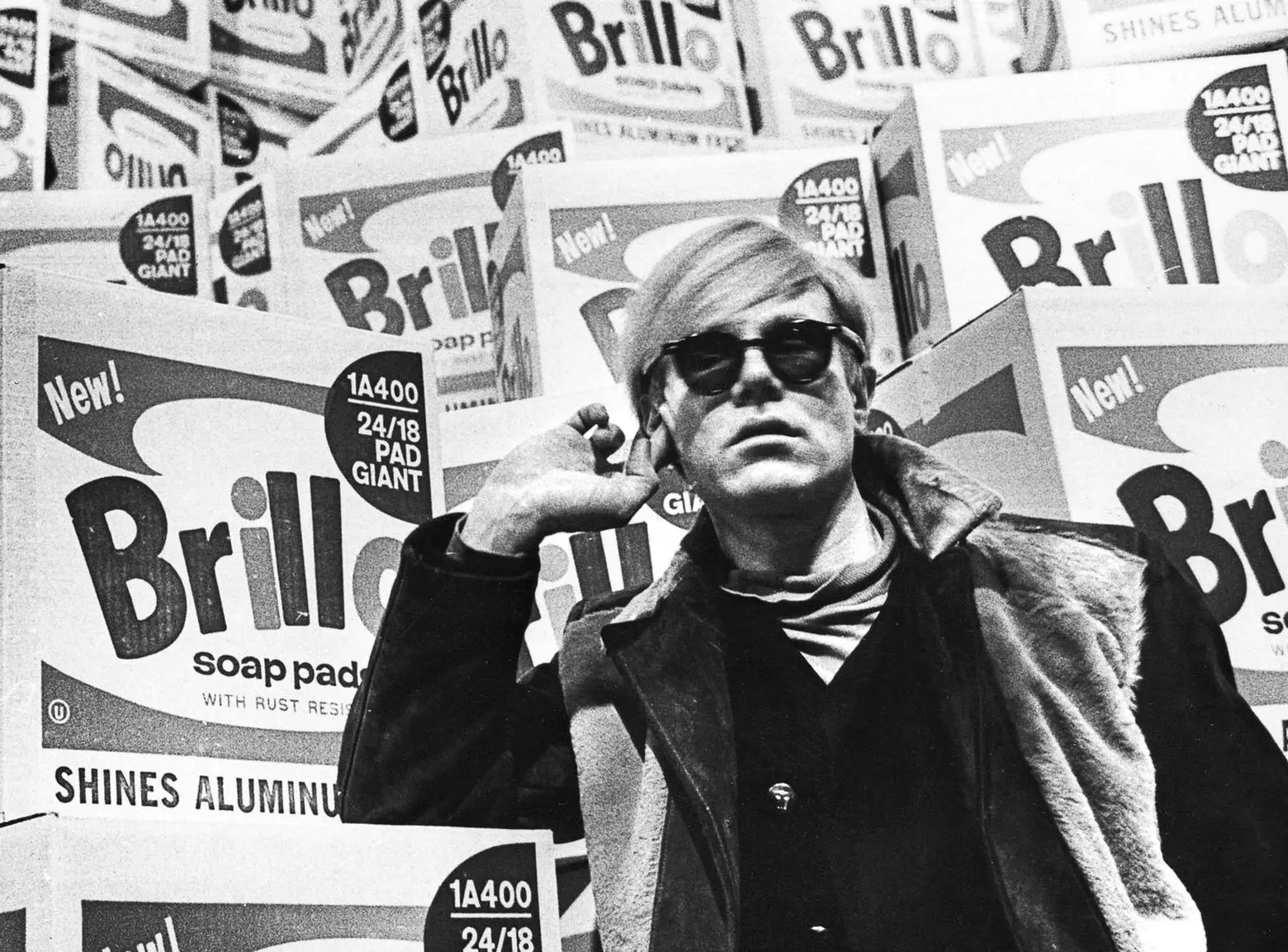
Andy Warhol in 1968, via Wiki Commons
The Whitney’s new Andy Warhol retrospective, “Andy Warhol – From A to B and Back Again,” is the first major presentation of the artist’s work in the United States since 1989. The show covers the museum’s entire fifth floor, as well as smaller galleries on the first and third floors. It traces Warhol’s career from his early days as a commercial illustrator, to his role as the world’s most iconic pop artist, and through his resurgence in the 1970s and ‘80s. If Warhol’s work is as famous as a can of Coca-Cola, so too is his relationship with New York City. High profile haunts like the Factory, Studio 54, and Max’s Kansas City are as closely associated with Warhol as any of his artwork. But Andy Warhol lived, worked, and played all over New York. Since Andy’s having his moment, give these 10 lesser-known Warhol haunts their 15 minutes.
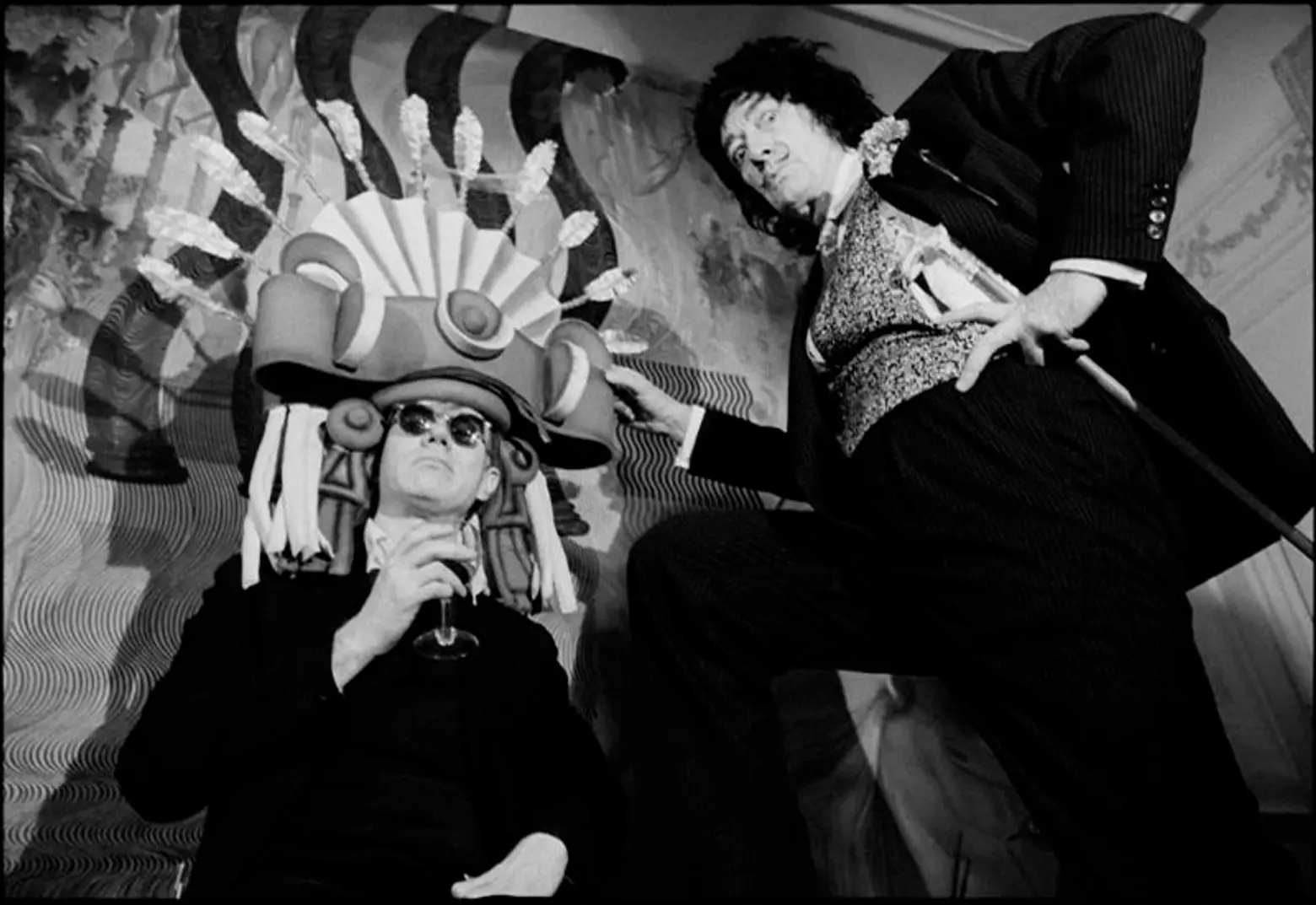
Andy Warhol and Salvador Dali at the St. Regis, 1965 via Phiadon
1. The St. Regis Hotel
In the ultimate meeting of the artistic icons, Andy Warhol met Salvador Dali at the St. Regis Hotel in the summer of 1965. They convened in Dali’s room, #1610, where opera played at full blast, and the surrealist placed a headdress on Warhol’s head. Dali and Warhol saw in one another a shared identity as “beautiful freaks,” and would come together at the St. Regis several times over the next two decades. On one occasion, Dali tied Warhol to a spinning board and poured paint over him.
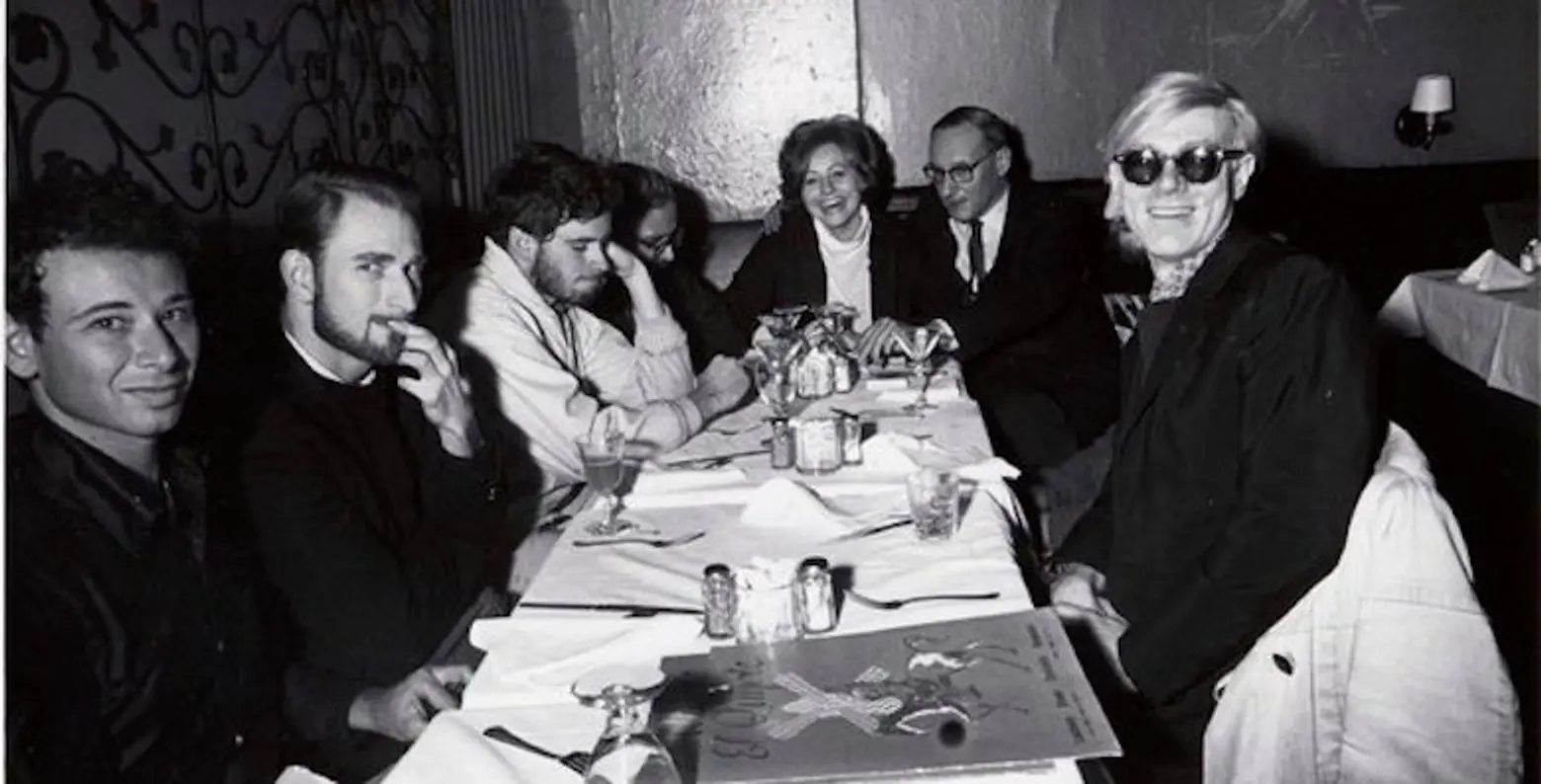
Andy and his entourage at El Quixote, via The Chelsea Hotel Blog
2. The Chelsea Hotel
But, the St. Regis wasn’t the only hotel in New York that can claim Warhol as a guest. Warhol lived at the Chelsea Hotel, New York’s most artistic abode, in the mid-1960s. He made “Chelsea Girls” there in 1966, and held court over lobsters at the back table of the much-beloved-and-recently-shuttered restaurant, El Quixote, which occupied the hotel’s ground floor. Members of Andy’s artist entourage, including Patti Smith and Robert Mapplethorpe, would collect the lobster shells and use them to make art and jewelry.
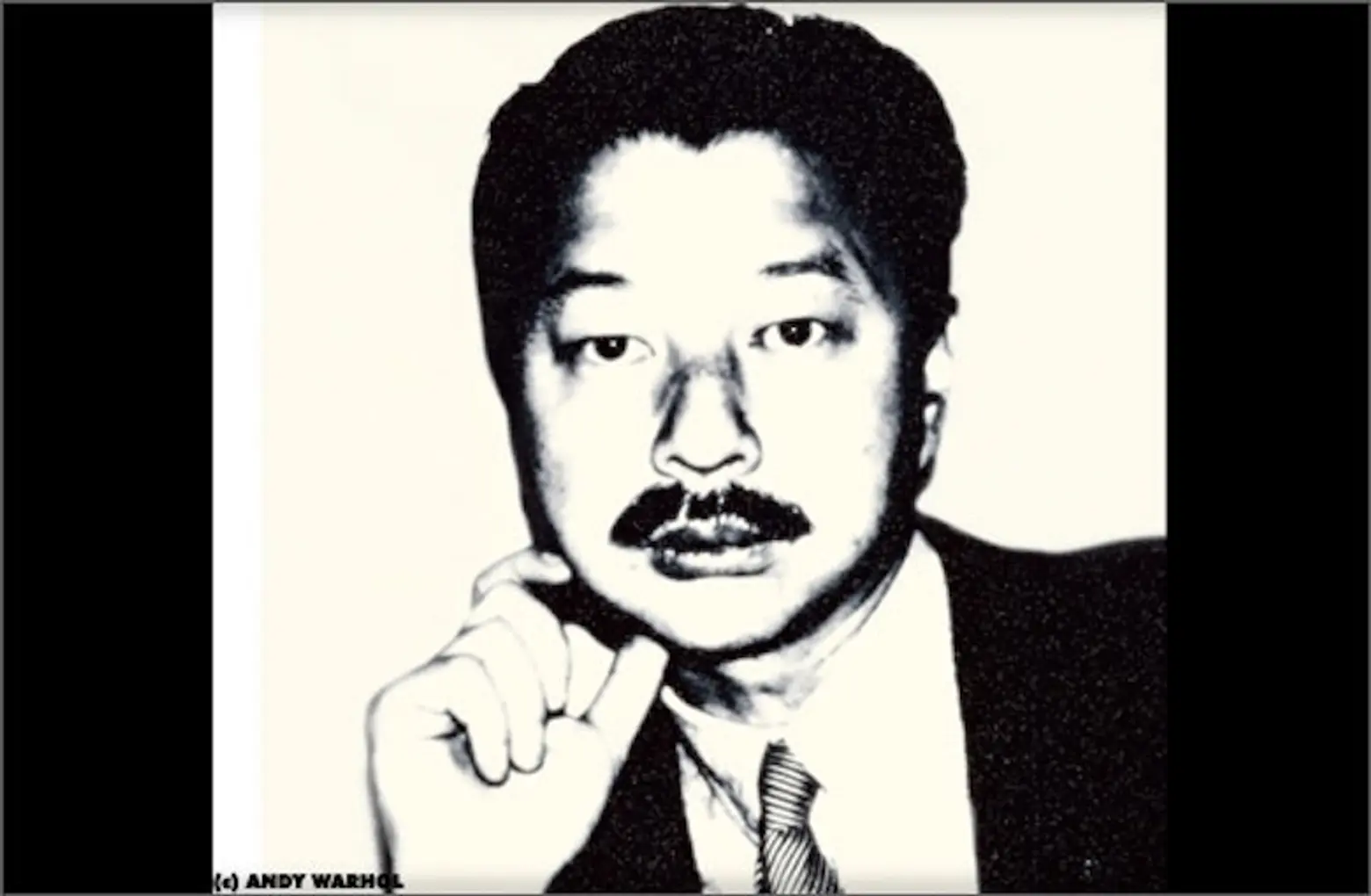
Andy Warhol, “Mr. Chow,” 1984 via Mr. Chow’s
3. Mr. Chow’s
Speaking of restaurants, when Mr. Chow’s Chinese restaurant opened on 57th street in 1979, it became a magnet for the art and fashion crowds. In the 1980s, Warhol and Jean-Michel Basquiat frequented Mr. Chow’s several times a week, and the duo doodled on napkins. Mr. Chow himself sometimes accepted artwork as payment, and Warhol created a portrait of him.
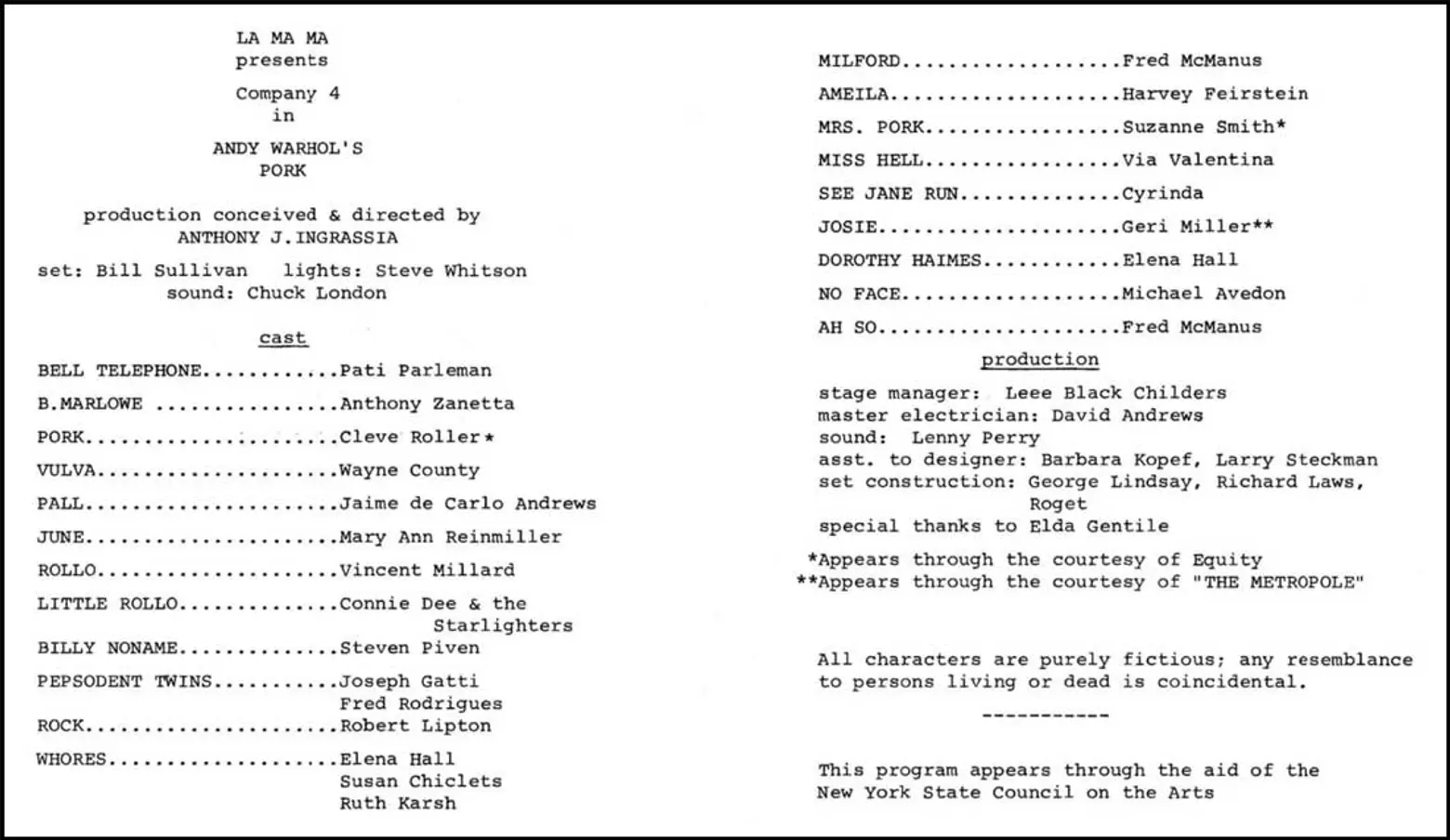
Program for “Pork,” 1971, via WarholStars
4. La Mama Theater
At his restaurant, Mr. Chow refers to his staff as performers and feels the dining experience should be akin to musical theater. But, Mr. Chow’s was not the only theater in Warhol’s life. In May 1971, Warhol’s only play, “Pork” premiered at La Mama Experimental Theater Club on East 4th Street. The show was a thinly veiled satire of Warhol’s Factory scene.
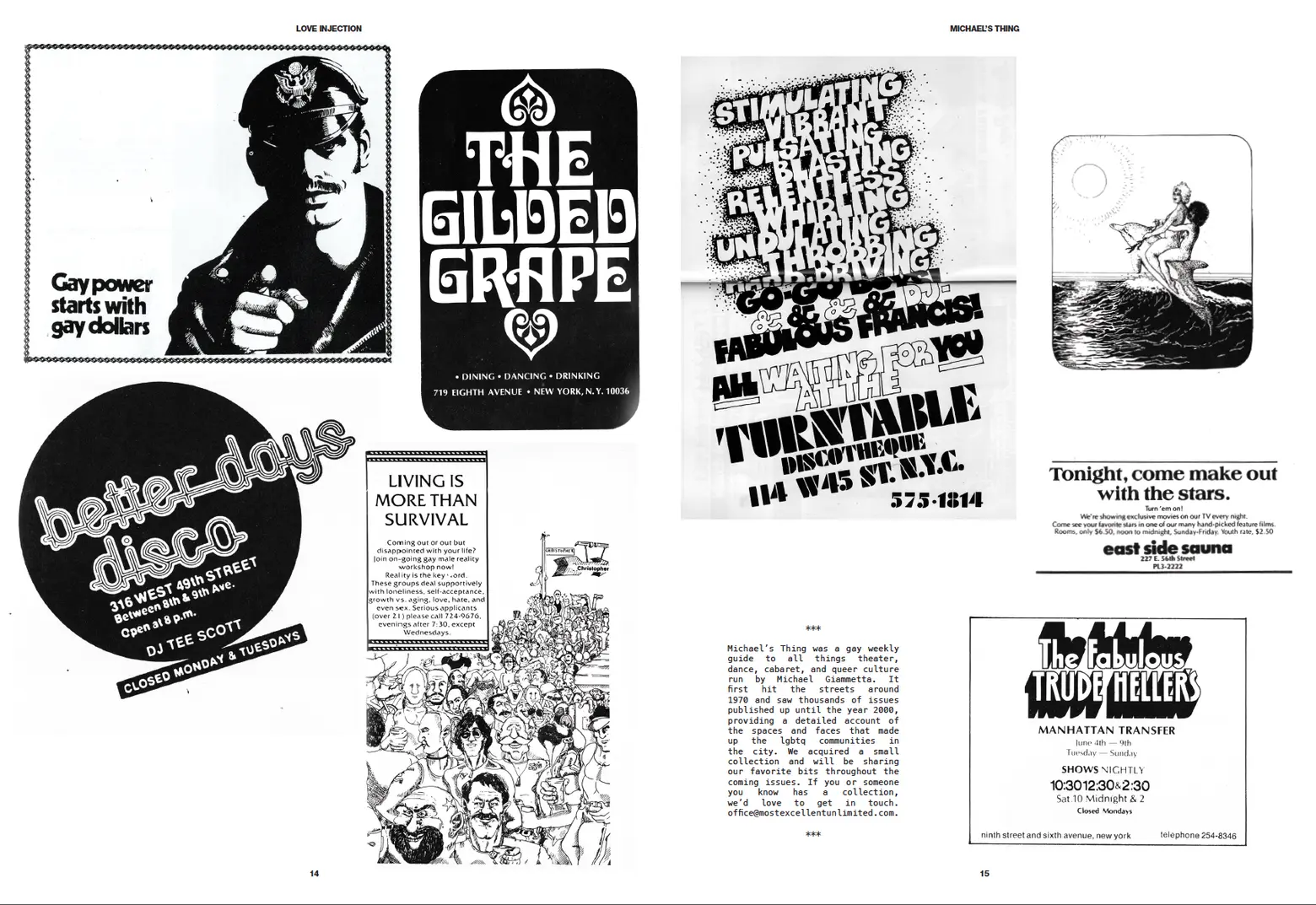
Downtown club ephemera, including the Gilded Grape via Love Injection
5. The Gilded Grape
When Warhol wasn’t at the theater, he was at the Gilded Grape at 719 8th Avenue, or a host of other drag bars and sex clubs including The Toilet and Crisco Disco. Of The Toilet, “a membership club for men only,” Warhol joked, “it lives down to its name,” and he loved that downtown vibe. He explained, “Uptown is for people who have already done something. Downtown is where they’re doing something now. I live uptown, but I love downtown.”
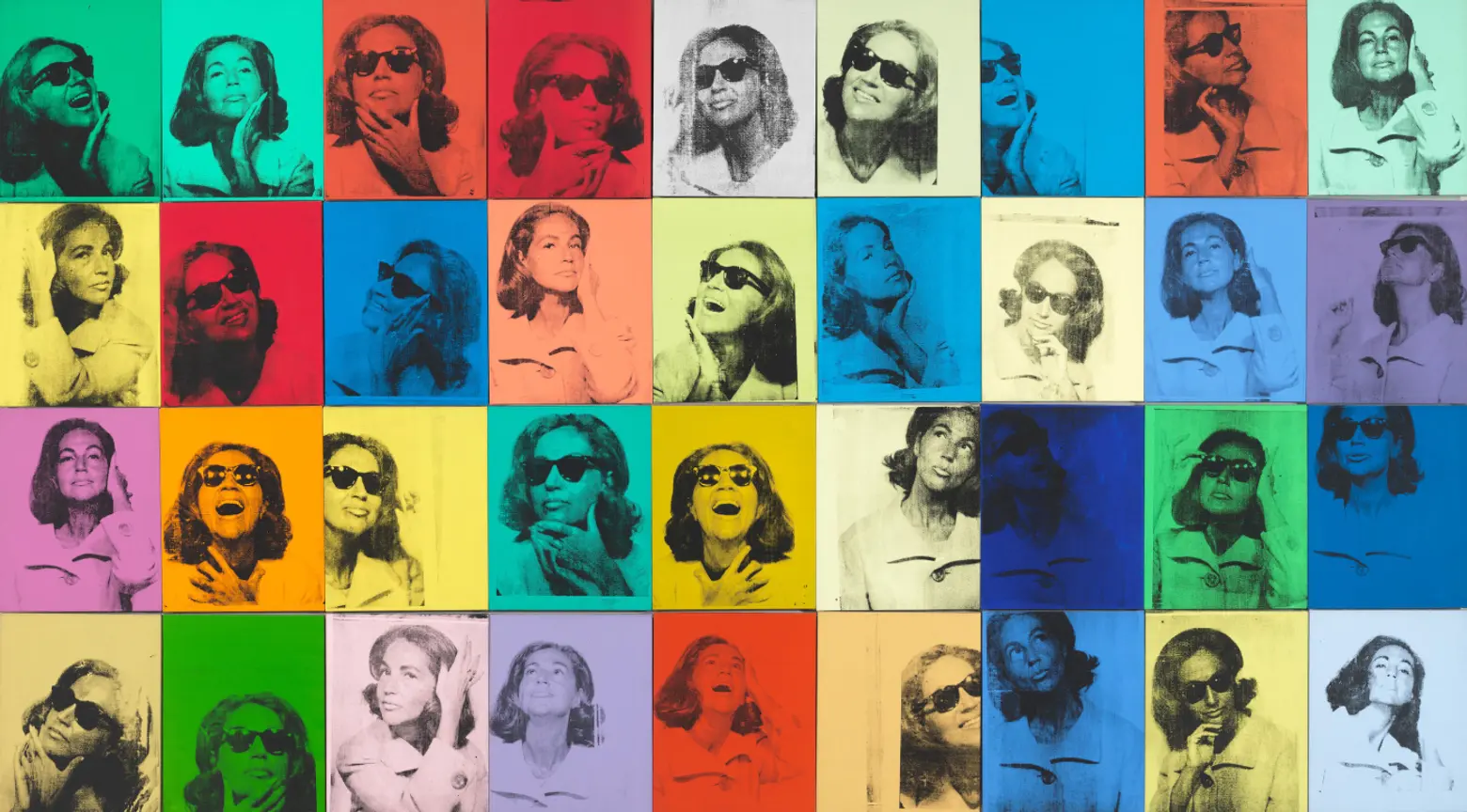
Andy Warhol, “Ethel Scull 36 Times,” 1963 via The Whitney
6. Times Square
Then there is Midtown. Warhol began his first major painting commission, “Ethel Scull 36 Times,” at a photo booth in Times Square. In 1963, he took Scull, an art collector, to “one of those places on 42nd Street where you put a quarter in a machine and take three pictures.”
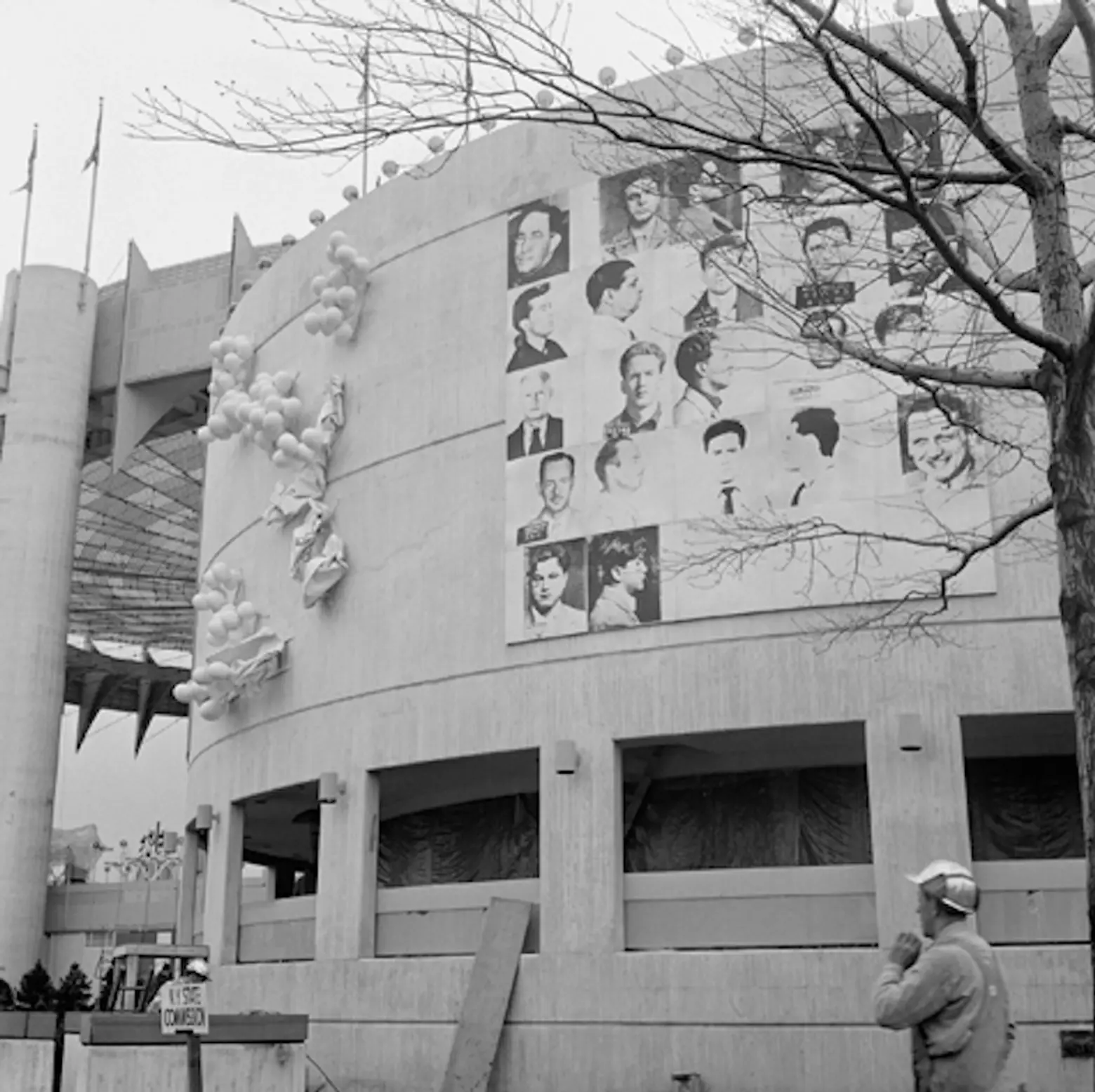
Andy Warhol, “13 Most Wanted Men” New York State Pavilion, 1964 World’s Fair, via Queens Museum
7. Flushing Meadows
The following year, Warhol created his first public art project, a mural entitled “Most Wanted Men.” The piece was commissioned by architect Philip Johnson for the New York State Pavilion at the 1964 World’s Fair, in Flushing Meadows, Queens. The men featured in the mural were taken from the NYPD’s Most Wanted list. The NYPD might have wanted the men, but the Fair’s organizers did not want the mural. The subject matter was considered too controversial for the upbeat environs of the Pavilion and was ultimately painted over in silver.
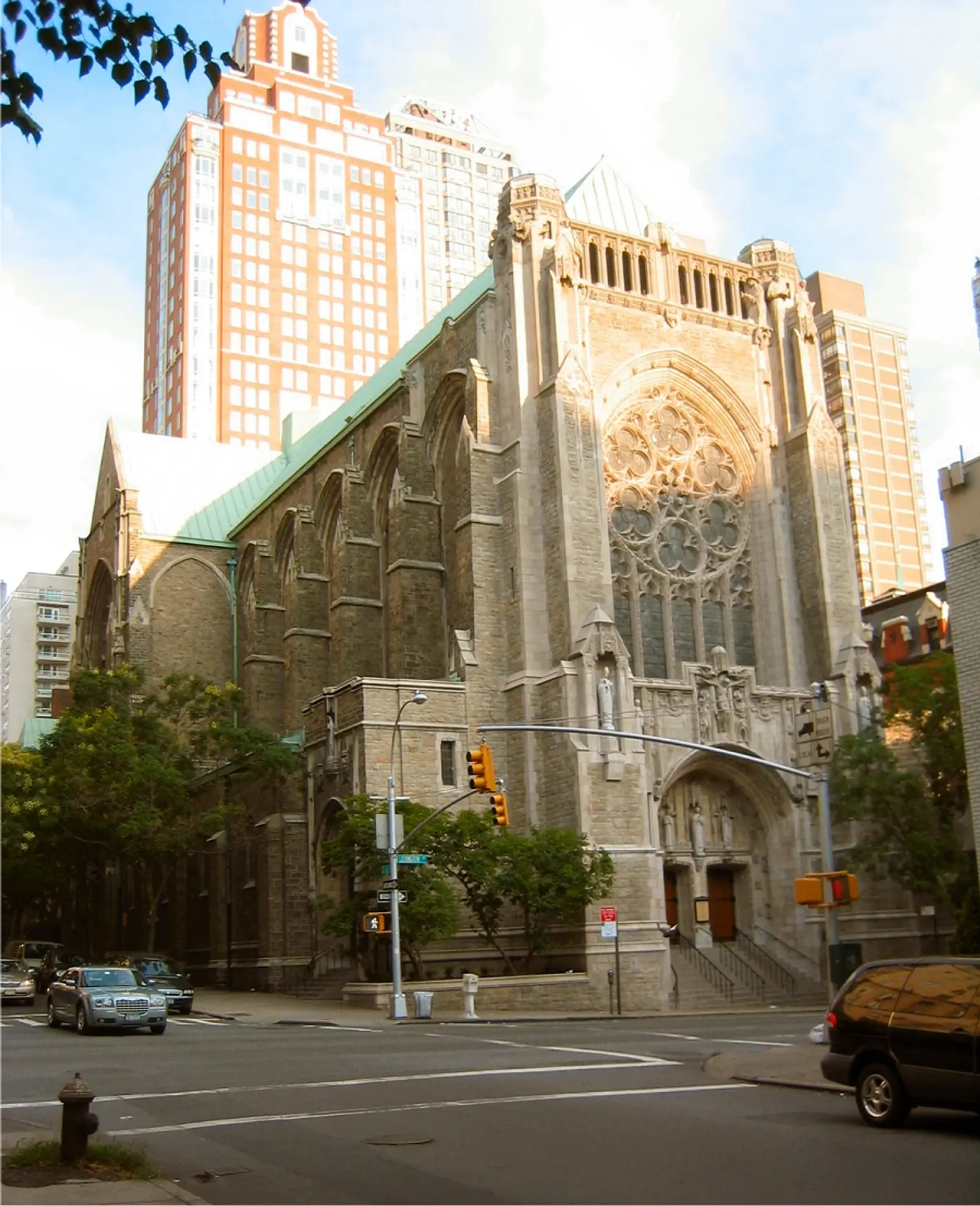
The Church of St. Vincent Ferrer via NYCago
8. The Church of St. Vincent Ferrer
Warhol’s life in New York included controversy as well as Catholicism. He was raised in Pittsburg as a practicing Catholic and continued to pray in that tradition throughout his life. Father Sam Matarazzo, of The Church of St. Vincent Ferrer at 869 Lexington Avenue, remembered that during the 1970s, Warhol attended Sunday Mass at the church, and worshiped privately there several times a week, though he did not participate in confession or communion.
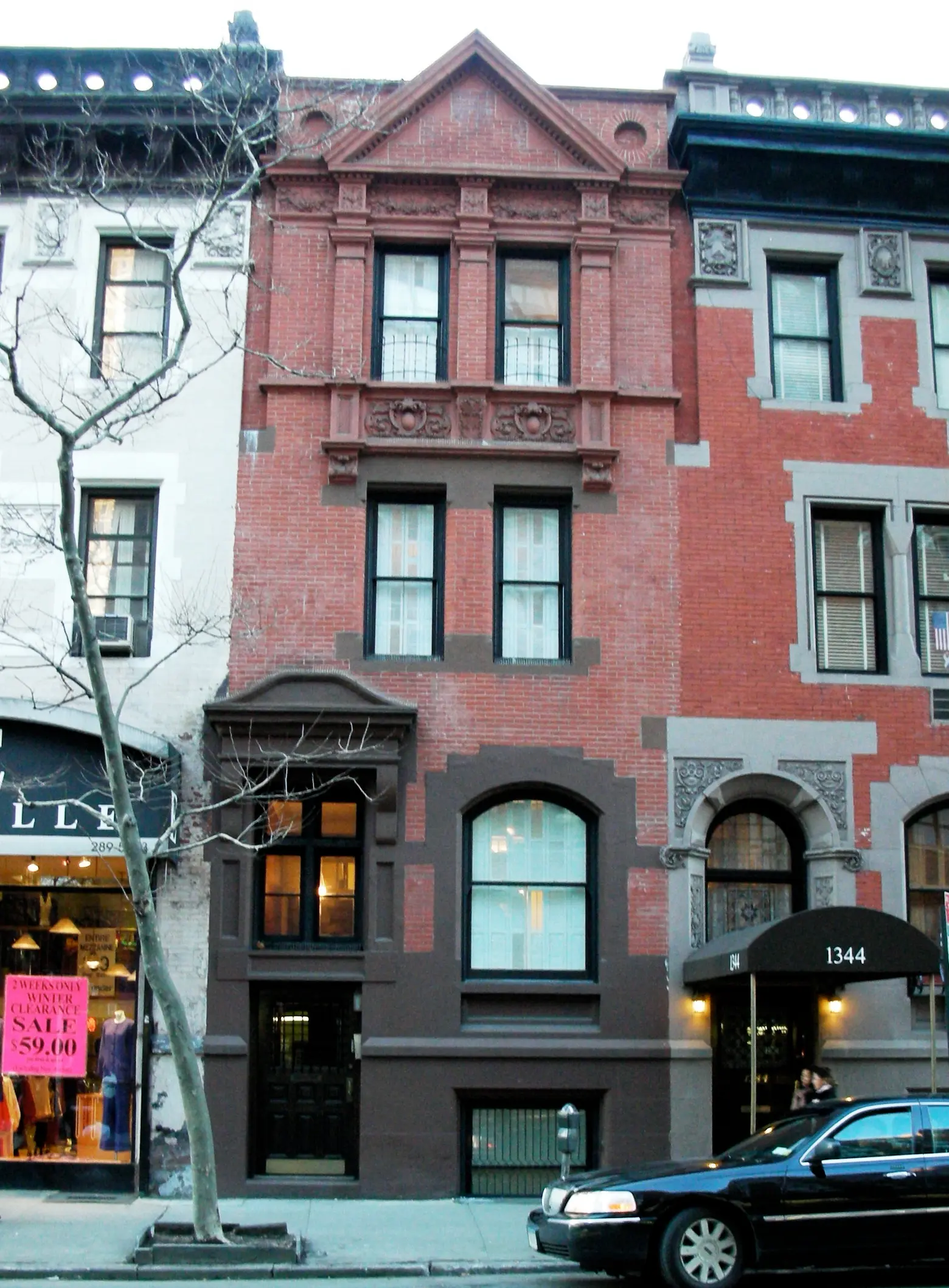
Andy Warhol’s first Manhattan Apartment at 1342 Lexington Avenue via Wikimedia Commons
9. 1342 Lexington Avenue
Warhol also lived on Lexington Avenue. He purchased the townhouse at 1342 Lexington Avenue in 1959 and lived there with his mother and their cats until 1974. Warhol created some of his most iconic work at the address, including his Campbell’s Soup series.
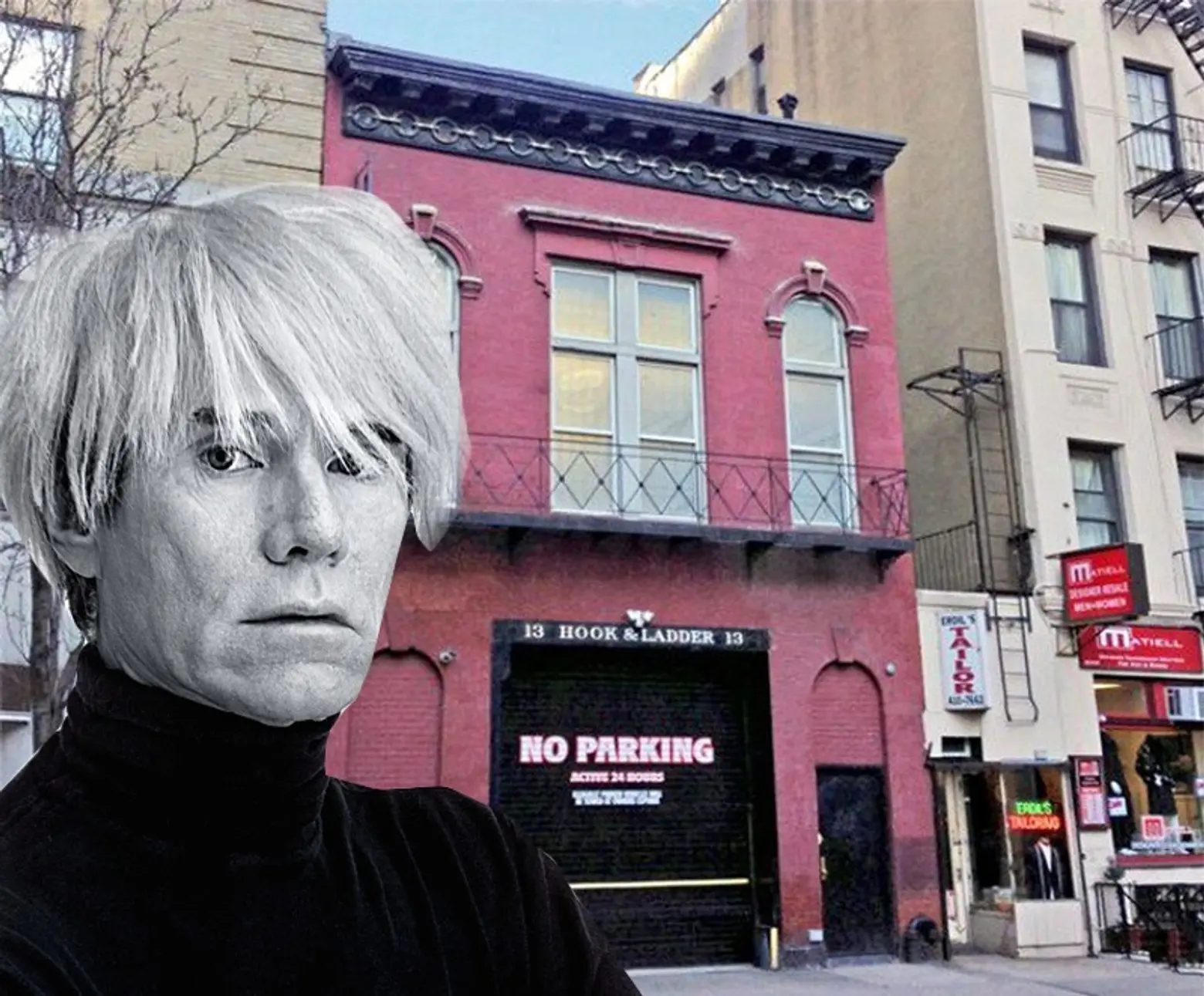
Warhol’s first studio at 159 East 87th Street
10. Hook and Ladder Company 13
But not all his work entered the world from Lexington Avenue. In 1962, Warhol rented a firehouse at 159 East 87th Street and turned it into his first artist’s studio in New York. Without heat or running water, the digs ran him just $100 per year.
RELATED:
- She shot Andy Warhol: The story behind actress Valerie Solanas’ attempt to assassinate a NYC icon
- Historic 1865 Chelsea firehouse was Andy Warhol’s 1949 refuge, now renting for $33K
- The Halston House, a former party spot of Andy Warhol, gets a price chop to $28M
- UES studio Andy Warhol rented for $150/month sells for $10 million
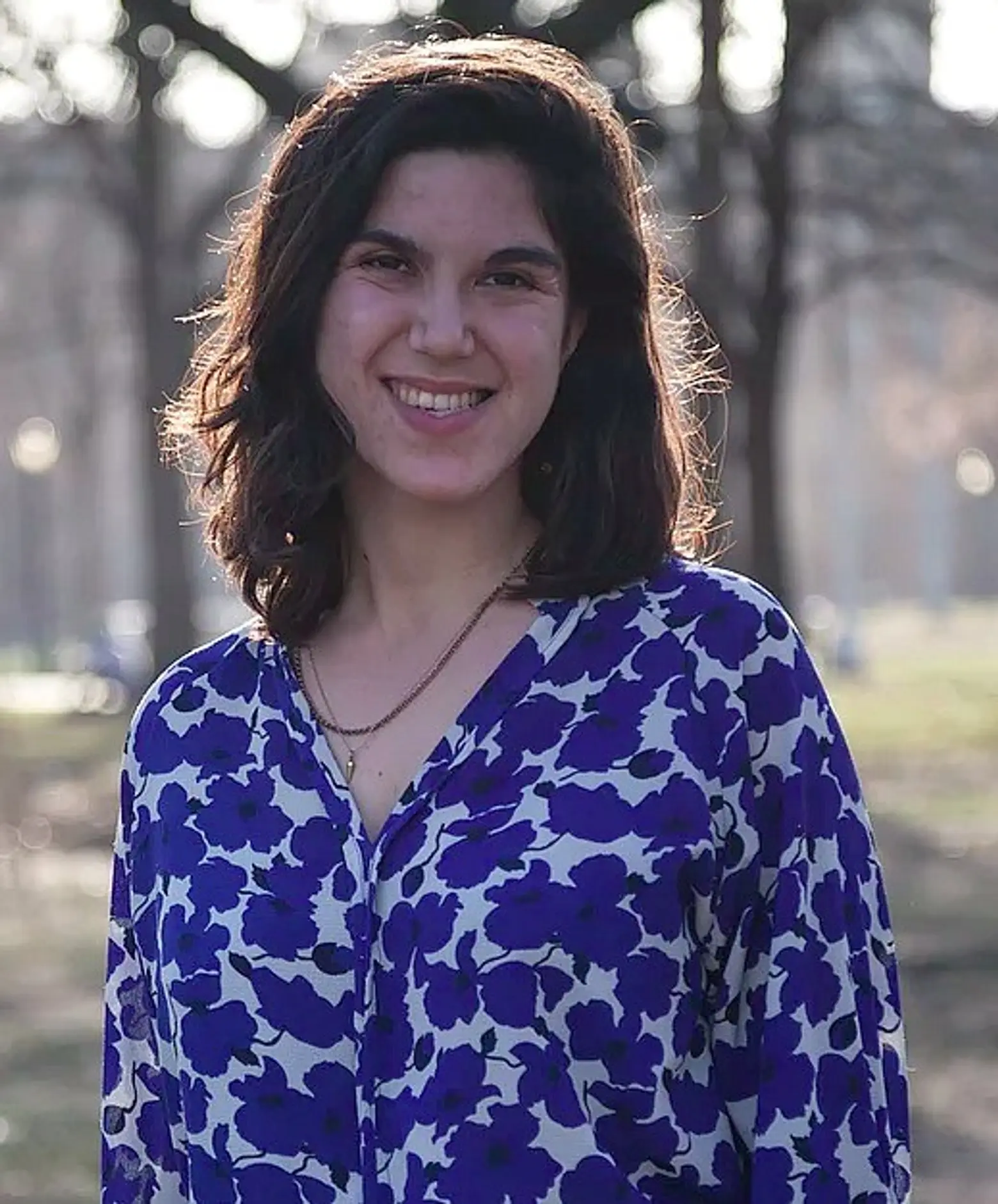 Lucie Levine is the founder of Archive on Parade, a local tour and event company that aims to take New York’s fascinating history out of the archives and into the streets. She’s a Native New Yorker, and licensed New York City tour guide, with a passion for the city’s social, political and cultural history. She has collaborated with local partners including the New York Public Library, The 92nd Street Y, The Brooklyn Brainery, The Society for the Advancement of Social Studies and Nerd Nite to offer exciting tours, lectures and community events all over town. Follow her on Twitter and Instagram.
Lucie Levine is the founder of Archive on Parade, a local tour and event company that aims to take New York’s fascinating history out of the archives and into the streets. She’s a Native New Yorker, and licensed New York City tour guide, with a passion for the city’s social, political and cultural history. She has collaborated with local partners including the New York Public Library, The 92nd Street Y, The Brooklyn Brainery, The Society for the Advancement of Social Studies and Nerd Nite to offer exciting tours, lectures and community events all over town. Follow her on Twitter and Instagram.
